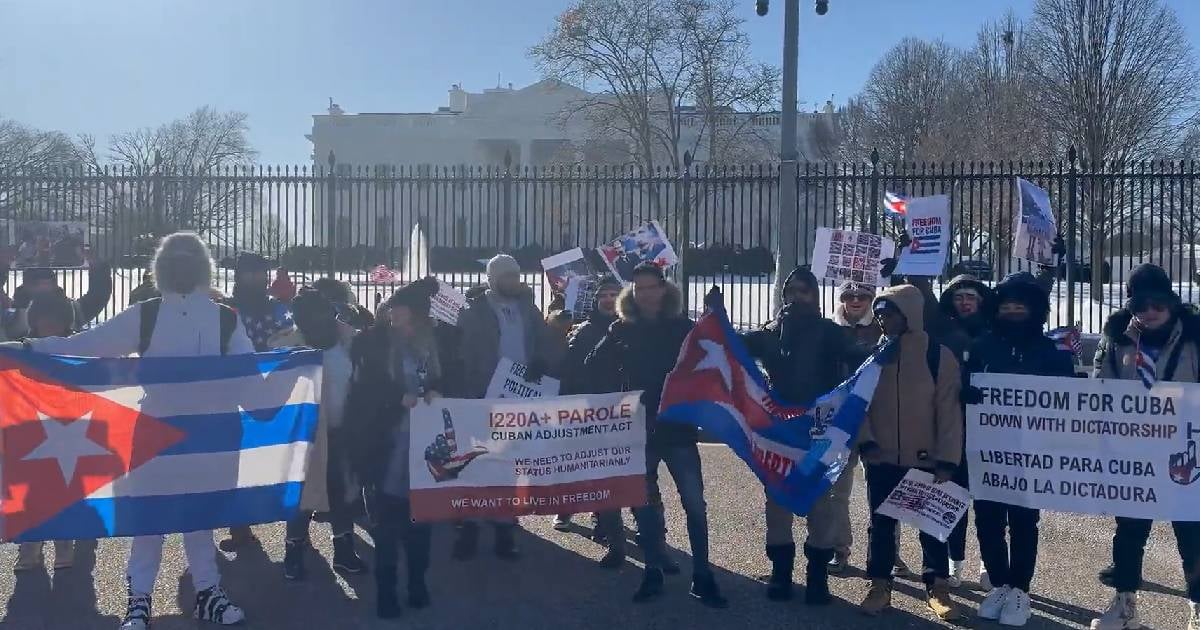
Just a little less than 20 days before presidential elections occur in the United States that could change the fates of many undocumented migrants in the country, several Cubans with I-220A (order of release on parole) demonstrated this Thursday in front of the White House to demand that the government provide a pathway to regularize their situation.
Cubans are seeking to end the migratory limbo they have been in since crossing the border from the United States to Mexico. “We just want to go and raise our voices so they understand us, that we do not have a status and we want to live legally in this country, that we do not want to be preoccupied with what could happen tomorrow and be deported,” Osefa Pino told Telemundo.
"It is a very great pain that one feels. We are still without residency; when people entered just like us, they were given parole and are now residents," warned Silvia Rivera to the same outlet.
The migrants who traveled to Washington will not only raise their voices but will also take the opportunity to demonstrate in front of the Cuban embassy in the U.S. capital to demand an end to communism on the island.
In January of this year, despite the intense cold of the date, many Cubans also arrived at the White House to demand that the government provide a way to regularize their immigration status in the country. They also did so in March, through a march in Miami and Houston, Texas.
The claims are based on the fact that they fled from a murderous dictatorship and were mistreated at the entry ports.
Willy Allen, a highly consulted immigration lawyer by Martí Noticias, explained that Cubans who received the I-220 have a complicated situation because "some were marked with the first box without a cut-off date," he noted.
But it is even more complicated for those who checked the second box, as it applies to those who crossed the border illegally and then surrendered to the authorities.
They explain through this medium that some judges already recognize the I-220A in any of its versions as a valid entry to apply for the Cuban Adjustment Act, but the final decision is still in the hands of the U.S. government.
It is estimated that about 800,000 Cubans are in a migratory limbo with the I-220A, and they fear deportation after the U.S. Board of Immigration Appeals (BIA) dismissed the option of considering that form as a valid document to obtain legal immigration status in the country in September of last year.
Cuban-American lawyers and politicians have asserted that a mass deportation is not feasible for the federal government, but the changes following the upcoming elections raise many questions for those in this situation.
Cuban-American Congresswoman María Elvira Salazar has expressed on several occasions that she continues to work to enable those thousands of people to apply for permanent residency through the Cuban Adjustment Act.
What do you think?
COMMENTFiled under: